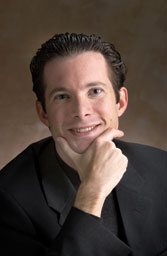
|
|
About Continuum Advertising Advisory Committee Archives Contact Us Continuum Home Faculty/Staff Subscribe related websites Alumni Association Marketing & Communications University of Utah Home |

Up frontDemystifying Higher Edby Jason Matthew Smith, editor When I was 18, the idea that I could attend college seemed almost laughable. Or so I thought. No one in my family had ever enrolled at a university. Plus, we didn’t have a spare nickel to use for an education, and I hadn’t the faintest idea how to go about applying. To me, colleges and universities were like mysterious, walled cities, full of people probably up to no good. Yet secretly I wanted to go to college. I yearned to be exposed to new things, new ideas, and new people. A friend who was in the thick of enrolling at Lon Morris College in Jacksonville, Texas, mentioned my predicament to his adviser. I was furious with him for doing so—who wants to be treated as a charity case? Forget college, I thought, nothing will come of it; the sticky note bearing my name will be lost on someone’s desk. I figured I’d be better off hefting new refrigerators and TVs for the appliance store where I’d worked for years. But all that changed one day when a representative from Lon Morris sat down at our kitchen table and removed the veil of mystery from higher education. For two hours, she patiently explained how I could go to college. She took me on a campus tour the following day. And I enrolled in the fall. Colleges and universities have learned the value of demystifying higher ed by essentially taking the institution into potential students’ neighborhoods—and sometimes to their kitchen tables. Schools can no longer sit back and wait for students to come to them. Instead, institutions are heading into the community to bridge that real or perceived chasm between town and gown. The idea has steadily gained traction over the years, and some schools have been more successful than others. The University of Utah, it turns out, is quite good at reaching out to the community. The University Neighborhood Partners (UNP) program, founded in 2000, essentially takes the U to Salt Lake City’s west-side neighborhoods, providing resources and educational opportunities to those who might otherwise dismiss a college education as unrealistic or unattainable. Colleen Casto takes a look at one particular UNP program that helps underprivileged children find the path leading toward college. The highly successful Adelante program serves as a model for other university-community programs, and a number of institutions are taking a serious look at what the U has been doing. In a similar vein, Kelley Lindberg explores the real worth of a college degree —and by that I don’t mean earning potential at a rewarding career post-graduation (although that is important, too), but rather its difficult-to-quantify yet very tangible benefits to society. Chad Nielsen’s “Degrees of Difficulty” offers up a virtual catalog of what might be called, in Ed Sullivan-like terms, the “really big problems”: those conundrums, techniques, or skills that elude, bedevil, or otherwise confound experts in a variety of fields. In addition, this issue includes a story on the University’s Student-Athlete Mentors, insights into the world of river running through the eyes of alumnus and aqua aficionado Roy Webb, a profile of award-winning journalist and documentary filmmaker Ken Verdoia, and a handful of University literary magazine editors discussing books they’ve never finished reading but intend to, and why. You’ll also notice a change on the magazine’s final page. Where we usually present a thoughtful essay, this issue’s And Finally instead features a photograph. From time to time, we’ll utilize images of people and campus to tell the University’s story through pictures rather than words. I hope you'll enjoy this issue. |

|